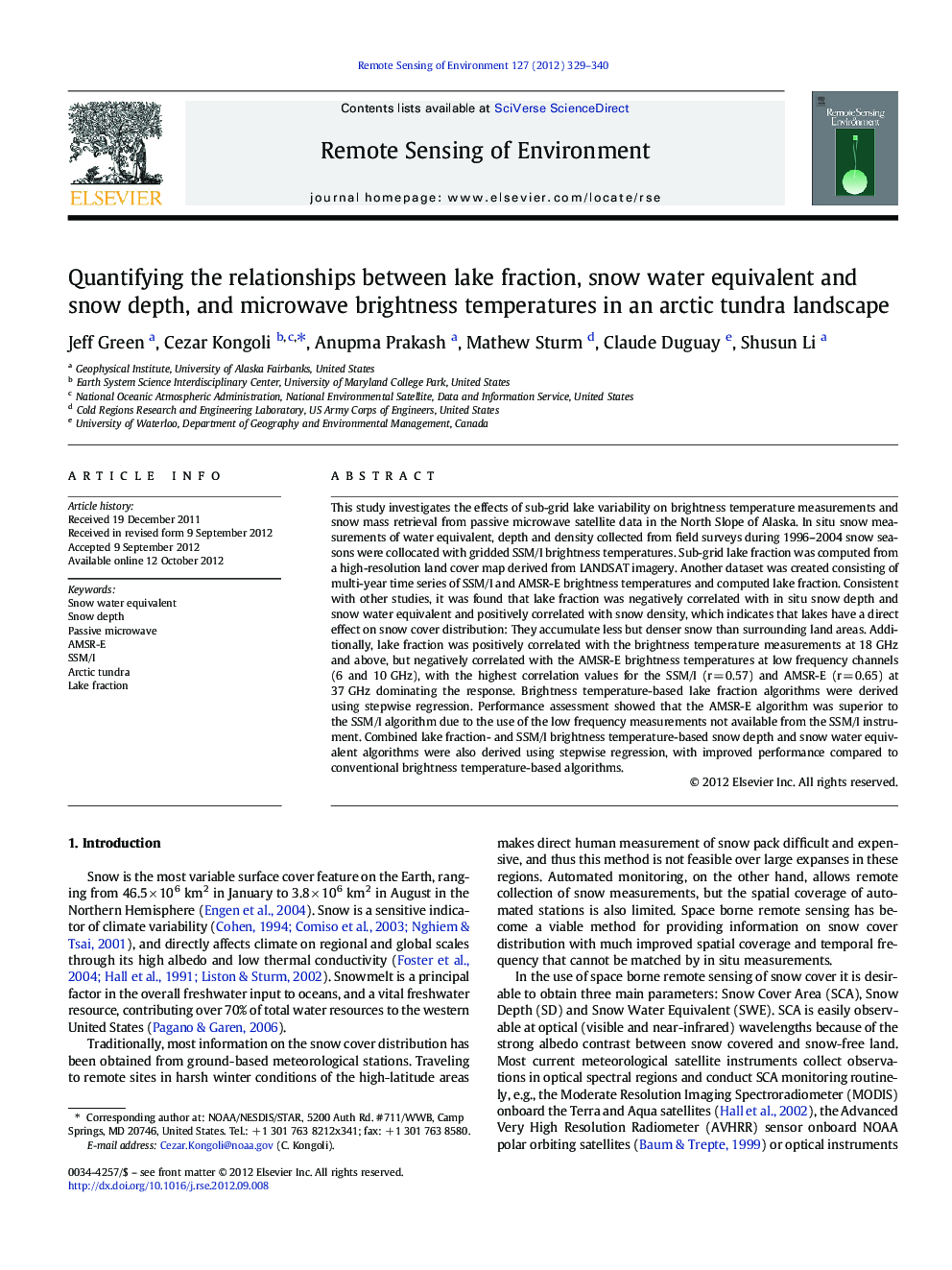| کد مقاله | کد نشریه | سال انتشار | مقاله انگلیسی | نسخه تمام متن |
|---|---|---|---|---|
| 4459107 | 1621273 | 2012 | 12 صفحه PDF | دانلود رایگان |

This study investigates the effects of sub-grid lake variability on brightness temperature measurements and snow mass retrieval from passive microwave satellite data in the North Slope of Alaska. In situ snow measurements of water equivalent, depth and density collected from field surveys during 1996–2004 snow seasons were collocated with gridded SSM/I brightness temperatures. Sub-grid lake fraction was computed from a high-resolution land cover map derived from LANDSAT imagery. Another dataset was created consisting of multi-year time series of SSM/I and AMSR-E brightness temperatures and computed lake fraction. Consistent with other studies, it was found that lake fraction was negatively correlated with in situ snow depth and snow water equivalent and positively correlated with snow density, which indicates that lakes have a direct effect on snow cover distribution: They accumulate less but denser snow than surrounding land areas. Additionally, lake fraction was positively correlated with the brightness temperature measurements at 18 GHz and above, but negatively correlated with the AMSR-E brightness temperatures at low frequency channels (6 and 10 GHz), with the highest correlation values for the SSM/I (r = 0.57) and AMSR-E (r = 0.65) at 37 GHz dominating the response. Brightness temperature-based lake fraction algorithms were derived using stepwise regression. Performance assessment showed that the AMSR-E algorithm was superior to the SSM/I algorithm due to the use of the low frequency measurements not available from the SSM/I instrument. Combined lake fraction- and SSM/I brightness temperature-based snow depth and snow water equivalent algorithms were also derived using stepwise regression, with improved performance compared to conventional brightness temperature-based algorithms.
► We investigate lake effects on snow and microwave brightness temperatures.
► Tundra lakes accumulate less but denser snow than that of surrounding land areas.
► Lakes significantly impact AMSR-E and SSMI microwave brightness temperatures.
► AMSR-E was superior for estimating lake fraction owing to the low frequency channels.
► Lake fraction input improved SD/SWE estimates based on SSM/I brightness temperatures.
Journal: Remote Sensing of Environment - Volume 127, December 2012, Pages 329–340